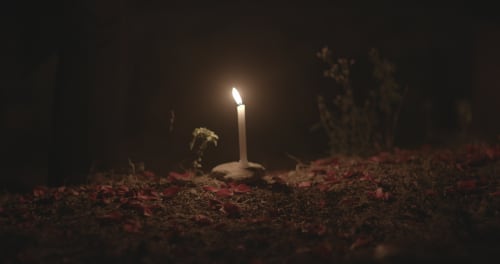In a far corner of the art gallery Project 88, there hangs a velvet curtain with the Urdu word Dum (Breath) etched on it in gold thread. A few steps away lies a white body bag. embroidered with peacocks. In the belly of the gallery a large screen lights up to play artist Pallavi Paul's film, How Love Moves. It takes the viewer to the Delhi Gate cemetery, where the two narrators share their stories, over the course of 63 minutes. One is an immigrant who came to India, fell in love, and then saw her husband murdered during the Delhi riots of 2020. The other is a chatty gravedigger named Shamim Khan, who helped bury 4.000 bod-les amid the pandemic and the riots. Their voices keep alive the memory of the many who have been anonymised and turned into data points by death and trauma. "The dead are not worthless," Khan says, at one point. "They're Allah's creations and must be returned to Him with respect".
Paul, 37, is a gifted interviewer, Her sub jects seem aware of the camera but not performing for it. There are hauntingly beautiful moments shot by the cinematographer Ashok Meena. The film makes space for ugliness too, through Paul's use of viral mobile clips, and snippets from TV news coverage of the riots. How Love Moves is all the more impactful because we, as a society, seem intent on pretending the worst is behind us. Our almost frenzied need to forget runs counter to what Paul has done: remember and feel for that past.
If you’re in Mumbai, brave the dug-up streets and traffic to see her film. Since it is part of her solo exhibition (which runs until April 26), it is freely available at Project 88. In a weird way, this makes it more accessi ble than most documentaries in India. Perhaps Paul will be able to make a con ventional documentary someday, though anyone who knows what that entails in India would balk at the idea.


